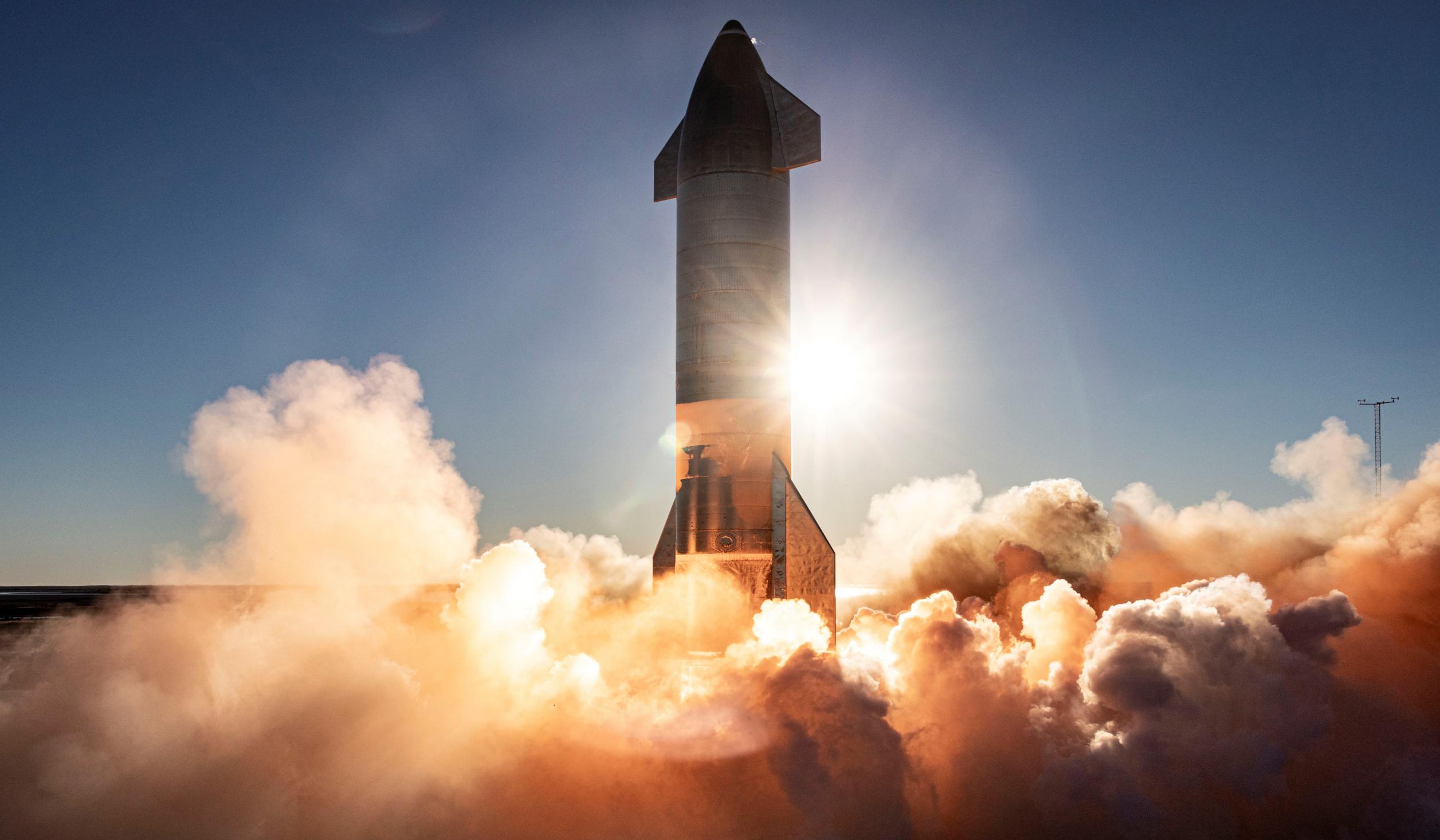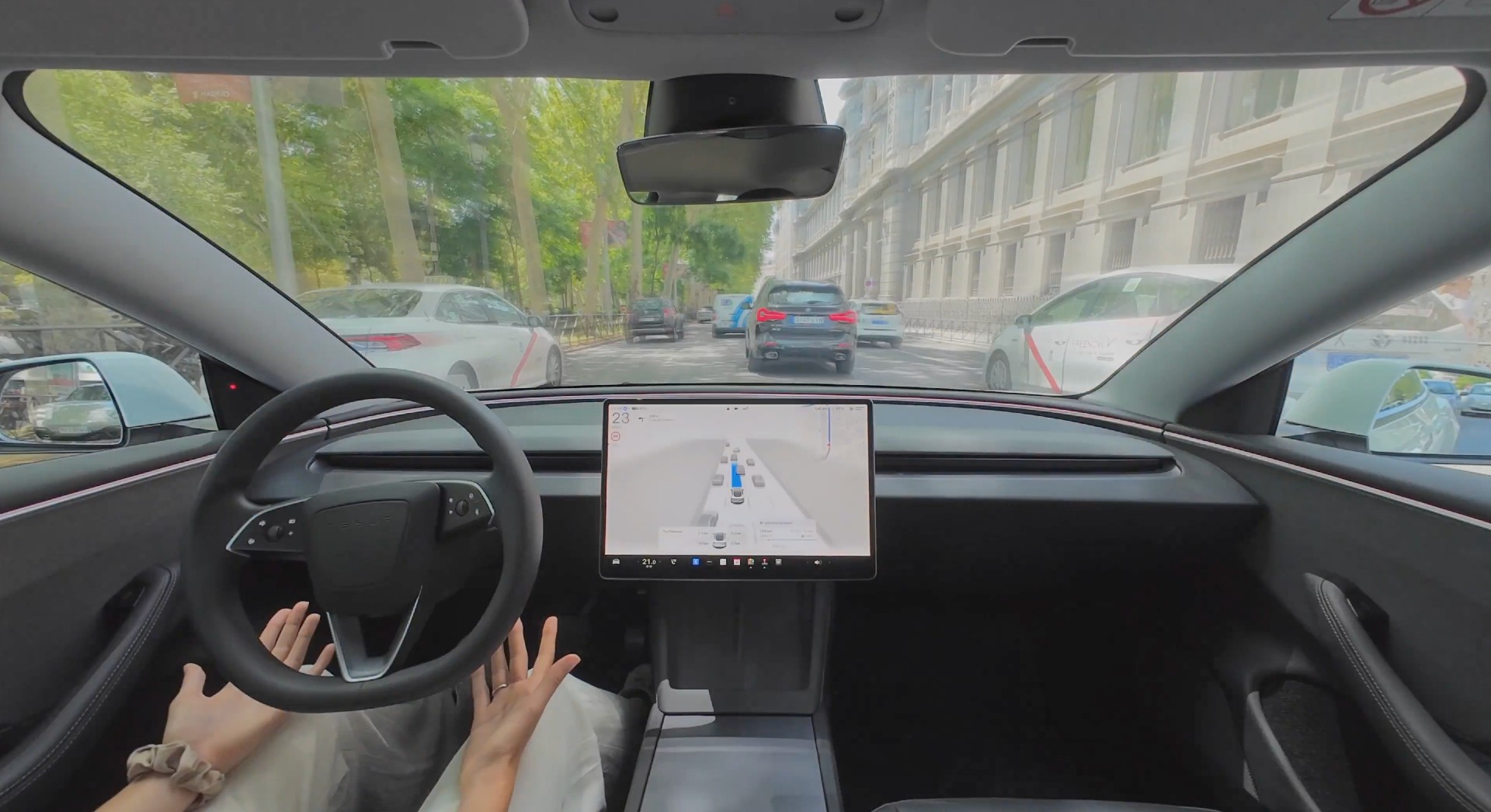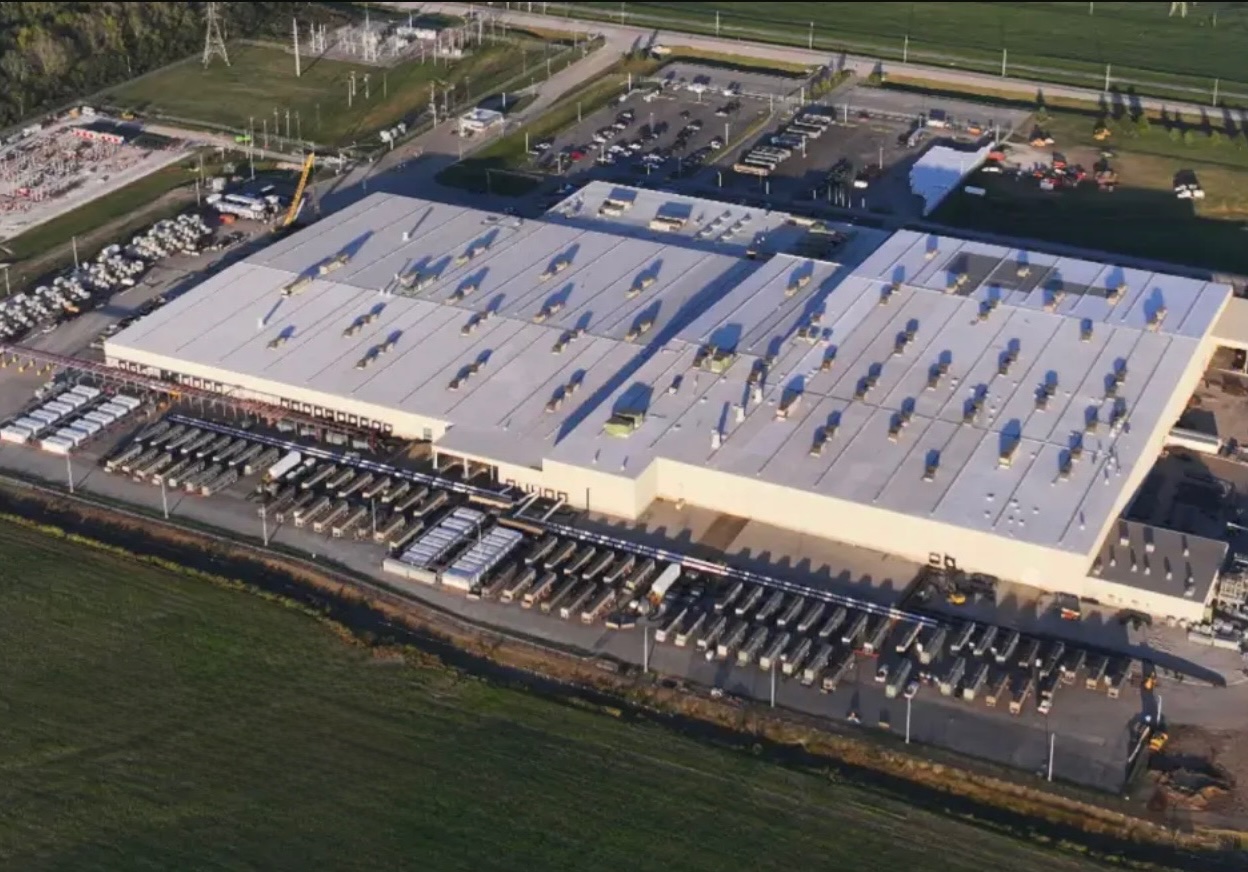

News
SpaceX Starship aborts Raptor engine test, briefly catches fire
Update: On March 15th, SpaceX got within milliseconds of Starship serial number 11’s (SN11) first Raptor engine test but suffered an abort just before full ignition, briefly leaving the rocket on fire.
Around 12:26 pm CDT, after an otherwise nominal static fire flow, Starship SN11 momentarily ignited one or two of its three Raptor engines’ preburners, referring to a central component that burns cryogenic liquid propellant into gas that’s ready for combustion. As with all preburner tests, intentional or otherwise, the end result looked a bit like a weak static fire and produced a small but visible amount of flame and thrust. Unlike intentional preburner tests, the static fire abort seemingly ignited something hidden inside Starship SN11’s and appeared to burn for at least another 30-40 seconds.
Raptor has proven itself to be an extremely durable engine, up to and including surviving visible onboard fires during actual Starship flight tests. Nevertheless, depending on the source of SN11’s post-abort fire and what it may or may not have burned or damaged, it’s no surprise that SpaceX ended testing for the day instead of quickly trying again, which it’s done several times prior. If the fire was largely harmless, SpaceX has already distributed notices suggesting a second attempt could happen as early as 6am to 12pm CDT (UTC-5) on Tuesday, March 16th. If more time is needed, SpaceX has the rest of the week to conduct any necessary repairs or swap out SN11’s Raptor engines.
Public documents show that SpaceX has plans to static fire and launch its latest Starship prototype within a two-day period that could begin later today.
SpaceX shipped Starship SN11 from its Boca Chica, Texas rocket factory to test and launch facilities a mile down the road on March 8th, less than five days after Starship SN10 exploded minutes after touchdown. The very next day, SpaceX completed ambient-temperature proof testing, filling Starship with benign nitrogen gas to check for leaks and verify system health. Two days after that, Starship SN11 appeared to complete a several-hour cryogenic proof test – swapping nitrogen gas for its supercool liquid form – without issue.
Despite the seemingly successful ‘cryo proof,’ something prevented a subsequent static fire test planned on March 12th before any attempt could be made, delaying the next attempt until after the approaching weekend. An agreement between SpaceX, Cameron County, and the state of Texas currently prevents road closures (and thus rocket testing) on weekends falling between Labor Day and Memorial Day, rules meant to preserve some level of public access to Boca Chica Beach.
As a result, unless SpaceX is already ready to launch (it has waivers for three such weekend closures for launch attempts), the company has to wait until Monday even if a minor issue fixable in hours or a day or so scrubs Friday test plans. While inconvenient, it’s worth noting that the existence of that public beach and the strong regulations that protect its public domain is likely one of the only reasons the general public can still get as close as they can to SpaceX’s Boca Chica ‘Starbase’.
For whatever reason, that road closure agreement does still mean that SpaceX will (in theory) be able to test and launch any day of the week from May 31st to September 6th, save for a few holidays, effectively boosting the number of opportunities by 40% for those 14 weeks. Until then, SpaceX is doing everything it can to take full advantage of the five days a week it is allowed to test Starship prototypes. N
Notably, although Starships SN8 and SN9 both hit a few weeks of technical and regulatory snags while preparing for their high-altitude launch attempts, SpaceX has been gradually speeding up that process over time. Starship SN10, the first prototype of its kind to land in one piece, took just 33 days to go from pad arrival to liftoff and spent just 8 days between its first static fire and launch attempts. The same feats took Starship SN8 77 and 50 days, respectively, with SN9 splitting the difference at 43 days from transport to liftoff and 28 days between its first static fire and launch attempts.
Road closure requests, a safety warning for residents, and a Temporary Flight Restriction (TFR) filed with the FAA all suggest that SpaceX’s current plan is to attempt Starship SN11’s first triple-Raptor static fire between 6am and 12pm CDT on Monday, March 15th. If that test goes almost perfectly, SpaceX wants to turn the rocket around for a 10 km (6.2 mi) launch attempt on Tuesday, March 16th – the very next day. Given the past performance of high-altitude Starship prototypes, that target is decidedly ambitious and likely to incur delays, but it still reveals the true scope of SpaceX’s goals even at this early stage of development.
If Starship SN11 does manage to launch within a few days of its first static fire attempt, SpaceX would still crush SN10’s 33-day record by a factor of three. Stay tuned for updates on Monday’s possible Starship static fire and rapid Tuesday turnaround attempt
Elon Musk
Why Tesla’s Q3 could be one of its biggest quarters in history
Tesla could stand to benefit from the removal of the $7,500 EV tax credit at the end of Q3.

Tesla has gotten off to a slow start in 2025, as the first half of the year has not been one to remember from a delivery perspective.
However, Q3 could end up being one of the best the company has had in history, with the United States potentially being a major contributor to what might reverse a slow start to the year.
Earlier today, the United States’ House of Representatives officially passed President Trump’s “Big Beautiful Bill,” after it made its way through the Senate earlier this week. The bill will head to President Trump, as he looks to sign it before his July 4 deadline.
The Bill will effectively bring closure to the $7,500 EV tax credit, which will end on September 30, 2025. This means, over the next three months in the United States, those who are looking to buy an EV will have their last chance to take advantage of the credit. EVs will then be, for most people, $7,500 more expensive, in essence.
The tax credit is available to any single filer who makes under $150,000 per year, $225,000 a year to a head of household, and $300,000 to couples filing jointly.
Ending the tax credit was expected with the Trump administration, as his policies have leaned significantly toward reliance on fossil fuels, ending what he calls an “EV mandate.” He has used this phrase several times in disagreements with Tesla CEO Elon Musk.
Nevertheless, those who have been on the fence about buying a Tesla, or any EV, for that matter, will have some decisions to make in the next three months. While all companies will stand to benefit from this time crunch, Tesla could be the true winner because of its sheer volume.
If things are done correctly, meaning if Tesla can also offer incentives like 0% APR, special pricing on leasing or financing, or other advantages (like free Red, White, and Blue for a short period of time in celebration of Independence Day), it could see some real volume in sales this quarter.
You can now buy a Tesla in Red, White, and Blue for free until July 14 https://t.co/iAwhaRFOH0
— TESLARATI (@Teslarati) July 3, 2025
Tesla is just a shade under 721,000 deliveries for the year, so it’s on pace for roughly 1.4 million for 2025. This would be a decrease from the 1.8 million cars it delivered in each of the last two years. Traditionally, the second half of the year has produced Tesla’s strongest quarters. Its top three quarters in terms of deliveries are Q4 2024 with 495,570 vehicles, Q4 2023 with 484,507 vehicles, and Q3 2024 with 462,890 vehicles.
Elon Musk
Tesla Full Self-Driving testing continues European expansion: here’s where
Tesla has launched Full Self-Driving testing in a fifth European country ahead of its launch.

Tesla Full Self-Driving is being tested in several countries across Europe as the company prepares to launch its driver assistance suite on the continent.
The company is still working through the regulatory hurdles with the European Union. They are plentiful and difficult to navigate, but Tesla is still making progress as its testing of FSD continues to expand.
Today, it officially began testing in a new country, as more regions open their doors to Tesla. Many owners and potential customers in Europe are awaiting its launch.
On Thursday, Tesla officially confirmed that Full Self-Driving testing is underway in Spain, as the company shared an extensive video of a trip through the streets of Madrid:
Como pez en el agua …
FSD Supervised testing in Madrid, Spain
Pending regulatory approval pic.twitter.com/txTgoWseuA
— Tesla Europe & Middle East (@teslaeurope) July 3, 2025
The launch of Full Self-Driving testing in Spain marks the fifth country in which Tesla has started assessing the suite’s performance in the European market.
Across the past several months, Tesla has been expanding the scope of countries where Full Self-Driving is being tested. It has already made it to Italy, France, the Netherlands, and Germany previously.
Tesla has already filed applications to have Full Self-Driving (Supervised) launched across the European Union, but CEO Elon Musk has indicated that this particular step has been the delay in the official launch of the suite thus far.
In mid-June, Musk revealed the frustrations Tesla has felt during its efforts to launch its Full Self-Driving (Supervised) suite in Europe, stating that the holdup can be attributed to authorities in various countries, as well as the EU as a whole:
Tesla Full Self-Driving’s European launch frustrations revealed by Elon Musk
“Waiting for Dutch authorities and then the EU to approve. Very frustrating and hurts the safety of people in Europe, as driving with advanced Autopilot on results in four times fewer injuries! Please ask your governing authorities to accelerate making Tesla safer in Europe.”
Waiting for Dutch authorities and then the EU to approve.
Very frustrating and hurts the safety of people in Europe, as driving with advanced Autopilot on results in four times fewer injuries!
Please ask your governing authorities to accelerate making Tesla safer in Europe. https://t.co/QIYCXhhaQp
— Elon Musk (@elonmusk) June 11, 2025
Tesla said last year that it planned to launch Full Self-Driving in Europe in 2025.
Elon Musk
xAI’s Memphis data center receives air permit despite community criticism
xAI welcomed the development in a post on its official xAI Memphis account on X.

Elon Musk’s artificial intelligence startup xAI has secured an air permit from Memphis health officials for its data center project, despite critics’ opposition and pending legal action. The Shelby County Health Department approved the permit this week, allowing xAI to operate 15 mobile gas turbines at its facility.
Air permit granted
The air permit comes after months of protests from Memphis residents and environmental justice advocates, who alleged that xAI violated the Clean Air Act by operating gas turbines without prior approval, as per a report from WIRED.
The Southern Environmental Law Center (SELC) and the NAACP has claimed that xAI installed dozens of gas turbines at its new data campus without acquiring the mandatory Prevention of Significant Deterioration (PSD) permit required for large-scale emission sources.
Local officials previously stated the turbines were considered “temporary” and thus not subject to stricter permitting. xAI applied for an air permit in January 2025, and in June, Memphis Mayor Paul Young acknowledged that the company was operating 21 turbines. SELC, however, has claimed that aerial footage shows the number may be as high as 35.
Critics are not giving up
Civil rights groups have stated that they intend to move forward with legal action. “xAI’s decision to install and operate dozens of polluting gas turbines without any permits or public oversight is a clear violation of the Clean Air Act,” said Patrick Anderson, senior attorney at SELC.
“Over the last year, these turbines have pumped out pollution that threatens the health of Memphis families. This notice paves the way for a lawsuit that can hold xAI accountable for its unlawful refusal to get permits for its gas turbines,” he added.
Sharon Wilson, a certified optical gas imaging thermographer, also described the emissions cloud in Memphis as notable. “I expected to see the typical power plant type of pollution that I see. What I saw was way worse than what I expected,” she said.
-

 Elon Musk3 days ago
Elon Musk3 days agoTesla investors will be shocked by Jim Cramer’s latest assessment
-

 News1 week ago
News1 week agoTesla Robotaxi’s biggest challenge seems to be this one thing
-

 News2 weeks ago
News2 weeks agoTexas lawmakers urge Tesla to delay Austin robotaxi launch to September
-

 Elon Musk2 weeks ago
Elon Musk2 weeks agoFirst Look at Tesla’s Robotaxi App: features, design, and more
-

 Elon Musk2 weeks ago
Elon Musk2 weeks agoxAI’s Grok 3 partners with Oracle Cloud for corporate AI innovation
-

 News2 weeks ago
News2 weeks agoSpaceX and Elon Musk share insights on Starship Ship 36’s RUD
-

 News2 weeks ago
News2 weeks agoWatch Tesla’s first driverless public Robotaxi rides in Texas
-

 News2 weeks ago
News2 weeks agoTesla has started rolling out initial round of Robotaxi invites

















